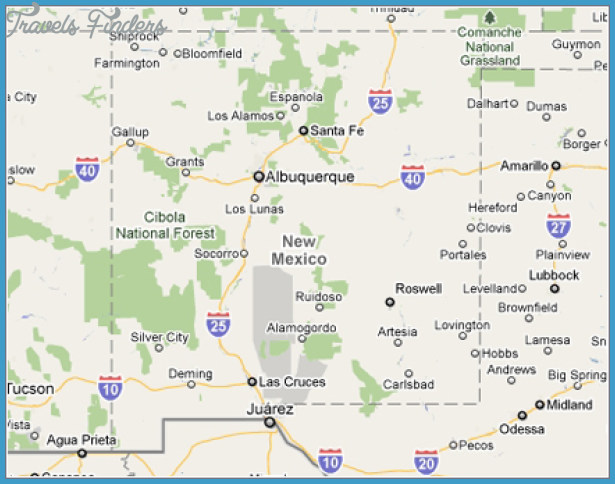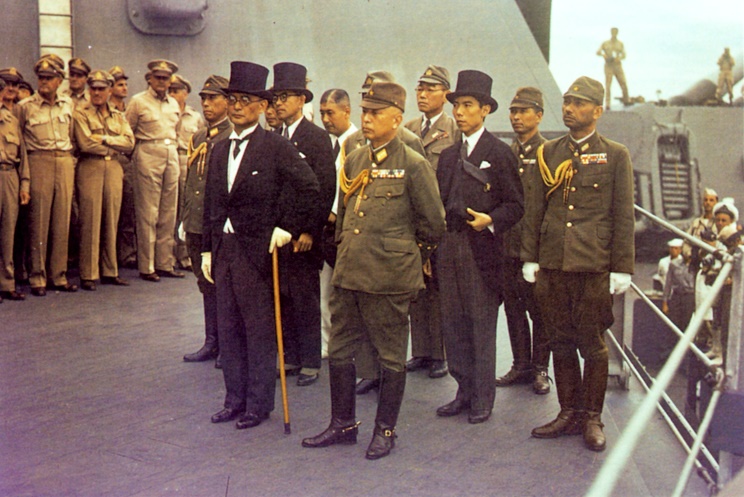Island Hopping and
Preparation to END the War
You remember from our discussion earlier how the Japanese attacked us at Pearl Harbor on December 7th, 1941. Then you remember how we defeated the Japanese at the Battle of Midway June 4th-7th, 1942. That was all OK, but to defeat Japan once and for all we had to dig them out of every island and every other country they had captured, and make our way to their Home Islands. They fought our attacks hard, and we had to come up with a plan to defeat them.
That plan came to be called “Island Hopping” because we would attack and capture an island from the Japanese, and then use it as a base to attack another island where the Japanese were. The goal was to get to their main Home Islands, because capturing those islands was thought to be the ONLY way to get the Japanese to give up and surrender.
The green arrows on this map show how the U.S. moved (hopped) from island to island, always moving closer to Japan
Iwo Jima : February 19th – March 26th, 1945

U.S. Marine artillery firing at the Japanese on Mount Suribachi

U.S. Marine artillery firing at the Japanese on Mount Suribachi
As we got closer to the Japanese Home Islands the Japanese soldiers fought harder and harder. At Iwo Jima we had 80,000 men attacking 20,00 Japanese soldiers. Yes, we outnumbered them by A LOT, but they had dug tunnels and caves all over the Island, which helped them defend themselves.

This shows the inside of a cave many years after the war. Kind of just like they left it.

This shows the inside of a cave many years after the war. Kind of just like they left it.
The final death toll among Marines was 5,931 killed in action, died of wounds or missing in action and presumed dead — more than twice as many Marines than had been killed in all of World War One. In all, more than 800 Americans gave their lives for every square mile of Iwo Jima.

U.S. Marine graves on Iwo Jima
Of the 21,000 Japanese soldiers present at the beginning of the battle, over 20,000 were killed and only 216 taken prisoner. We began to find out just what it would cost if we DID have to invade their Home Islands. They would fight to the death.

Okinawa:April 1st – June 21st, 1945

Okinawa is at the bottom of the map, and shows up in red. See how close is it to Japan? It is only about 340 miles away.

Okinawa is at the bottom of the map, and shows up in red. See how close is it to Japan? It is only about 340 miles away.
The Japanese considered this island almost like it was part of their Home Islands. We knew we would need to bring a lot of force to attack and defeat. We had over 60,000 Marines and Army soldiers to attack. We used over 1,300 ships to fire their big cannons at the Japanese before the soldiers landed.
During the first 24 hours of the attack those ships fired 7,600,000 pounds of cannon shells (That is = 3,800 mid sized SUV’s if each car weighs 2,000lbs.).
This is a bit long, but it DOES show U.S. artillery hitting the island before our Marines and soldiers went in
When it was all over we had won, gotten closer to Japan for the next step, which would be to attack their Home Islands. But there was a cost:
* 38,000 Americans wounded and 12,000 killed or missing,
* More than 107,000 Japanese and Okinawan soldiers killed of the 117,00 who were alive when the battle started (That is 91% killed)
* 100,000 Okinawan civilians (not army soldiers) killed.
The Japanese demonstrated they were not going to surrender easily, and that they were not afraid to fight where there were civilians in the way.
Operation Downfall
Operation Downfall was the plan to invade the Japanese Home Islands.
Japan is circled in red. Korea and China are to the left.
Okinawa showed just how costly it would be.
The planners of the attack learned that the Japanese Army was giving lunge mine weapons (someone using this weapon would shove the sticks on the end of it to cause the explosion.), and other weapons, to civilians, even young girls, so they could attack the invading Americans. They also had plans to strap bombs onto people who would go blow up U.S. ships, tanks, and soldiers themselves.
Lunge Mine: The 3 sticks were triggers that would cause the explosion when pressed against something
We would wind up having to fight ALL Japanese. One Japanese citizen called to prepare for battle was high school girl, Yukiko Kasai. The army gave her a hand spike to use as a weapon.
Hand spike to use as a weapon
They told her, "Even killing one American soldier will do. … You must aim for the stomach.’
The invading forces would be facing at least 900,00 Japanese soldiers and all the civilians who were prepared to fight. The estimates of casualties (killed and wounded) were as follows:
- 1,700,000 to 4,000,000 American killed and wounded
800,000 of those would be killed - 5,000,000 to 10,000,000 Japanese killed
But...We had something else that made this kind of attack not necesary.
Hiroshima and Nagasaki – Dropping The Atomic Bombs
August 6th and 9th, 1945
August 6th and 9th, 1945
Development of The Atomic Bomb
What many did not know was there was another weapon being
developed. In October of 1939 Two scientists, Leó Szilárd
and Albert Einstein, sent a letter to President Roosevelt.
They told the President that it was likely that in the near future
it would become possible to use science to cause an explosion
that would make and release HUGE amounts of power.
They made the point that this technology could be used to
produce weapons more powerful than anyone imagined.
It was known that Germany was experimenting and trying to
develop this technology. So the decision was made to start a
program to discover what could be done. It would eventually
employ 130,000 people in at least 3 different countries,
and cost $2,000,000,000.
In order to really develop this idea they needed space, lots of it.
They needed to have rooms to do experiments in, and other
rooms for scientists and workers to live in. One way this was
done in the area of Los Alamos, New Mexico.
You can see Los Alamos in the northern part of this map.
They sent a letter to the school telling them the government was taking
their school:
Mr. A. J. Connell
President and Director
Los Alamos Ranch School
Espanola, New Mexico
Dear Sir:
You are advised that it has been determined
necessary to the interests of the
United States in the prosecution of
the War that the property of the
Los Alamos Ranch School be acquired
for military purposes.
Therefore, pursuant to existing law, a condemnation proceeding
will be instituted in the United States District Court for the District of
New Mexico to acquire all of the school's lands
and buildings, together with all personal
property owned by the school and used
in connection with its operation.
Although the acquisition of this property is of the utmost importance in the
prosecution of the war, it has been determined that it will not be necessary
for you to surrender complete possession of the premises until
February 8, 1943. It is felt that this procedure will enable you to complete
the first term of the regular school year without interruption.
You are further advised that all records pertaining to the
aforesaid condemnation proceeding will
be sealed, by order of the Court, and public
inspection of such records will be
prohibited. Accordingly, it is requested that you refrain from making
the reasons for the closing of the school known to the public at large.
Sincerely Yours,
[Henry Stimson]
Secretary of War.
|
This is the actual letter that was received. Does it look fancy enough for something that really was such a big deal?
Once the bomb was developed they needed to test it. Even the
scientists had no idea of what would really happen.
The testing required different steps:
Setting up the test. Look at how big the bomb piece was
at the end
Moving the plutonium core (the part that makes the explosion). It starts a chain reaction that releases a LOT of energy. That can destroy things.
Were they really doing this safely???
Were they really doing this safely???
The “Jumbo Device” that was designed as a backup to hold the main
explosive thing in case the nuclear part did not explode.
It cost $12 million to build, and was a steel cylinder 10 feet in diameter
and 25 feet long. Its walls were 14 inches thick and the entire device
weighed 200 tons.
This was the Trinity Explosion (The very first nuclear explosion) in color
This is the main scientist, Robert J. Oppenheimer, speaking about the 1st nuclear blast. Look at his facial expressions, and the way he was talking. What does that indicate about what he was thinking?
It was another version of this weapon that President Truman
(Roosevelt had died in April, 1945) decided to drop on Japan
in August when they would not surrender.
First Bomb - Dropped on Hiroshima on August 6th, 1945.


On 6 August 1945, a specially changed B-29 bomber lifted off from an airfield on an island in the Pacific named Tinian. The bomb was dropped from the plane at 31,600 feet.
.jpg)
.jpg)
Enola Gay - The B-29 that dropped The Bomb
The bomb exploded 1,750 feet in the air. The blast was later estimated to be the equal of 13,000 tons of TNT (an explosive) An area approximately 4.7 square miles (a square that has each side equal to 4.7 miles) was completely destroyed. Japanese officials determined that 69% of Hiroshima's buildings were destroyed and another 6–7% damaged. About 70,000 to 80,000 people, or some 30% of the population of Hiroshima, were killed immediately, and another 70,000 injured.


The middle of the place in Hiroshima that was destroyed by the bomb.
This video shows the explosion over Hiroshima
See a movie clip of what it might have been like:
Second Bomb – Dropped on Nagasaki on August 9th, 1945
The Japanese did not surrender, even after they witnessed the power of the new weapon we had. President Truman then decided to drop another atomic bomb. It wound up being released over the city of Nagasaki because the weather over the first target city made hard it to see.
Eplosion of the bomb over Nagasaki
Japan surrendered on August 15th, 1945 when Emperor Hirohito made a radio broadcast. It was called VJ Day, which meant Victory over Japan.
The Japanese delegation aboard the USS Missouri, a battleship
The war was over.
Hideki Tojo, the former military leader of Japan, tried to kill himself, but was captured, tried as a war criminal, and then executed on December 23rd, 1948.







